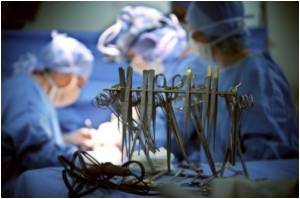
Each patient was implanted with a synthetic part about five centimeters long, consisting of a section of the trachea, at the top of which was a version of the cricoid arch and plate - a hollow, collar-like segment that forms the base of the larynx.
The surgeries involved nanocomposite scaffolds seeded with autologous mononuclear cells taken from the patients' bone marrow.
The implants were created from synthetic scaffolds seeded with the patients' own stem cells.
The laryngotracheal transplants were the most complex synthetic part yet transplanted, and is the first step in the creation of a complete larynx, including the parts that produce sound.
Since each patient's own stem cells were used, their bodies have accepted the transplants without the use of immunosuppressive drugs.
Advertisement
The key technology behind the surgeries was a shoebox-sized apparatus known as a bioreactor, created by Holliston, MA-based Harvard Bioscience, in which the new custom-designed organs were grown.
Advertisement
Source-ANI










